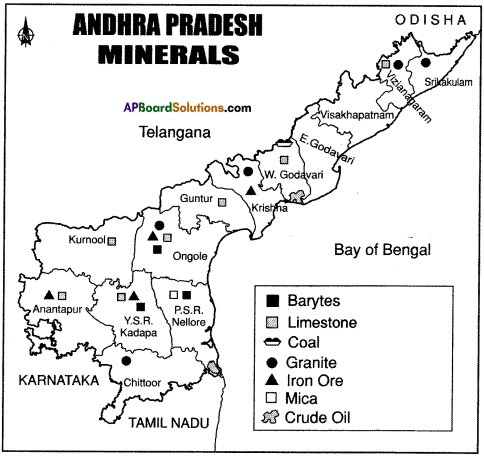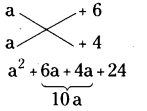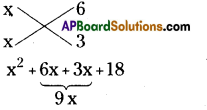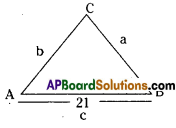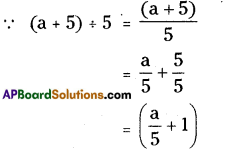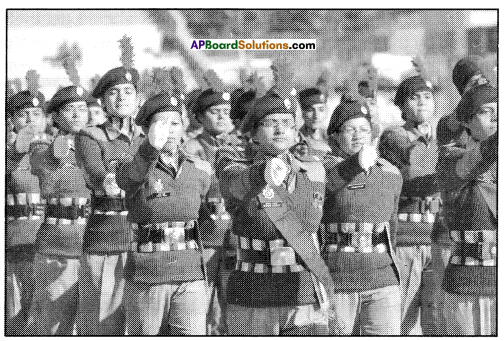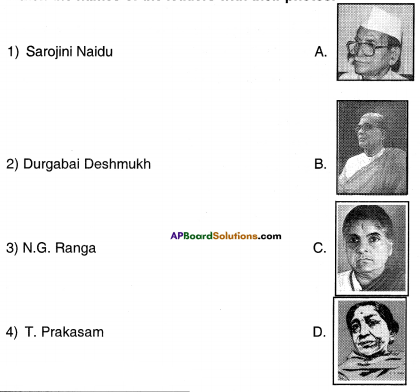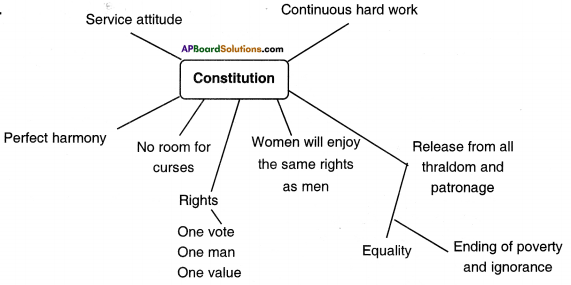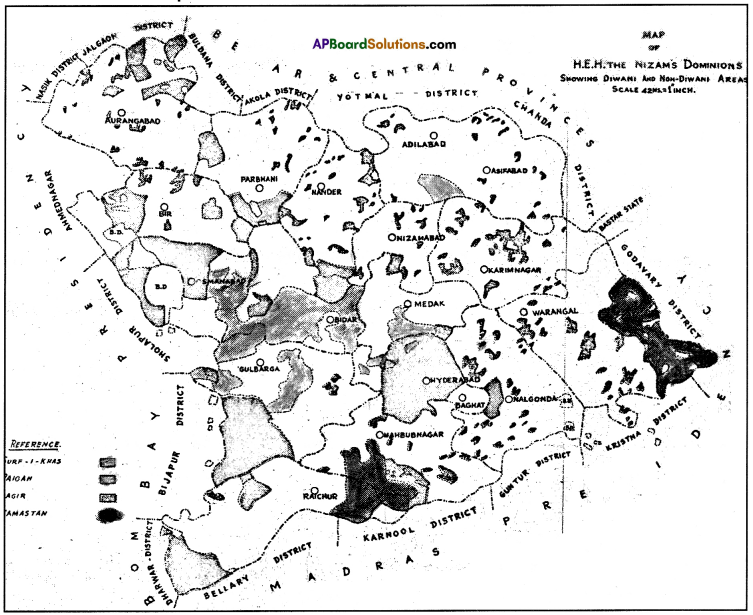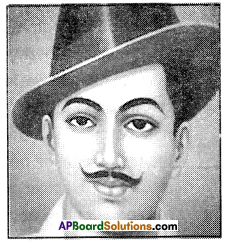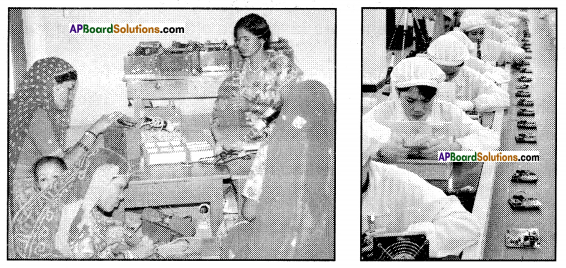AP State Syllabus AP Board 8th Class Social Studies Important Questions Chapter 7 Money and Banking.
AP State Syllabus 8th Class Social Studies Important Questions 7th Lesson Money and Banking
Question 1.
How do we usually exchange old clothes?
Answer:
We usually exchange old clothes with steel utensils. This depends mostly on the seller.
Question 2.
How do we usually exchange plastic & newspaper?
Answer:
We usually exchange these with onion traders. He gives 1 1/2 kg onions for 1 kg plastic or newspaper.

Question 3.
How do we exchange hair?
Answer:
Money is offered for hair.
Question 4.
How do we exchange paddy?
Answer:
In our village paddy is exchanged for services rendered by washerman, barber etc.
Question 5.
Ask your parents how washermen, barbers, need kaavalikaru were paid for their work in villages and towns.
Answer:
Nowadays they are paid money only. But 15 years ago our parents paid them in the form of paddy.
Question 6.
When should one use fixed deposits for savings?
Answer:
The money invested in fixed deposits should not be withdrawn in the given period. Then only one can use fixed deposits for savings.

Question 7.
If a very large number of account-holders do not wish to keep their money in the bank, how will it affect the bank’s working?
Answer:
This affects the reserves of a bank. The bank cannot lend loans to customers. This affects their income. As a result it is impossible to run a bank.
Question 8.
Suppose you need Rs. 2000. You fill a cheque and give it to your friend and send her to get the money in cash. What happens?
Answer:
Bankers reject this cheque. Bankers never give cash to the cheques. The sister should have an account in the branch. Then only she can withdraw the amount.
Question 9.
What are the names of some banks you know?
Answer:
- Kotak Mahindra,
- State Bank of India,
- Andhra Bank,
- Indian Bank.
Question 10.
Name some durable metals.
Answer:
Copper, bronze, silver and gold.

Question 11.
Are all the problems solved with the invention of money?
Answer:
With the invention of money, some problems remained and new problems came up.
Question 12.
Why were metals preferred for use as money?
Answer:
Copper, bronze, silver and gold are durable, can be divided into parts and be carried around Since they were scarce they became acceptable by all. So the metals were preferred for use as money.
Question 13.
Do you think minting of coins was a good idea?
Answer:
Yes, I think so. But the quality and measurement should be perfect as per norms.
Question 14.
Why do banks ask for security while lending?
Answer:
There is no personal relation and identification between the bank people and their customers. If the bank people failed to recollect the debts, it leads to bankrupt. So banks ask for security while lending.

Question 15.
What will happen if some borrowers do not repay the bank loan?
Answer:
The bank collects the loan from the guarantors or disposes the mortgage.
For e.g.: If any customer fails to repay the housing loan, the bank sells the house in auction. It takes the loan amount and gives the remaining amount to the customer.
Question 16.
What a crossed cheque?
Answer:
The cheque which is crossed as on the left side top of the cheque.
Question 17.
Fill in the blanks:
1. If we use ———– there will be no problem in exchanging commodities.
2. Exchange of goods and services with each other is called ———– system.
Answer:
1. money
2. barter

Question 18.
Why do we save money in a bank?
Answer:
Money kept at home does not earn interest. But, money kept in a bank account does. If you keep money in the bank it wili grow.
In the villages, poor peoples incomes are irregular and unpredictable. You have to cope with a bad crop season, loss of employment, illness or death in the family. You also need money for marriages and festivals. Saving money in a bank account helps you smoothen your income.
Money is safe in bank, please check, if the bank in which you intend to keep your hard earned money is licensed, please do not share bank account details with anybody. Protecting your bank acount is as important as opening and using it.
Question 19.
How do we open a bank account for a Minor?
Answer:
A savings/fixed/recurring bank deposit account can be opened by a minor of any age through his/her natural or legally appointed guardian.
Minors above the age of 10 years are allowed to open and operate savings bank accounts independently, subject to bank’s risk management systems that are in place.
Additional banking facilities like internet banking, ATM / debit card, cheque book facility etc., are allowed. But minor accounts are not allowed to be overdrawn and should always remain in credit.

Question 20.
Read the following paragraph and answer the following questions.
Over time, people preferred scarce and attractive metals as medium of exchange. Copper, bronze, silver and gold are durable, can be divided into parts and be carried around. Since they were scarce, they became acceptable by all. People could buy and sell with the assurance that the money they had in hand would be valuable and sought by others. They did not have to worry that their money might lose value as could happen with grains or cattle. However, some problems remained and new problems came up. For every exchange, the metal had to be weighed and later on traders were not sure about the quality of the metal. What one might get in exchange may not be pure gold or silver. After sometime, there was a serious problem of trust in the quality of metal that was used as money for exchange.
1. Name some durable metals.
Answer:
Copper, bronze, silver and gold
2. What was the assurance of the people?
Answer:
People could buy and sell with the assurance that the money they had in hand would be valuable and sought by others.
3. Why did the people not have to worry?
Answer:
They did not have to worry that their money might lose value as could happen with grains or cattle.
4. Are all the problems solved with the invention of money?
Answer:
With the invention of money, some problems remained and new problems came up.
5. People preferred scarce and attractive metals as
Answer:
Medium of exchange.

Question 21.
Read the following paragraph and answer the following questions.
In many towns and cities representatives of all banks meet on each day to settle what each bank has to pay to the other and receive from the other. Cheques that have been verified are handed over to each other. One of the banks works as the Clearing Bank where all the banks have an account. The payments and receipts between banks are done by this Clearing Bank.
In the present system, all banks and most of their branches are linked by computers. All deposit holder accounts and their signatures can be accessed by the branches anywhere. Hence representatives don’t have to meet nor do banks have to send cheques to the outstation branches. The transaction between one bank and another is done through interlinked com-puters. This makes the whole system work faster and in an easier manner.
1. Who meet on each day?
Answer:
In many towns and cities representatives of all banks meet on each day.
2. What did they exchange?
Answer:
Cheques that have been verified are handed over to each other.
3. What is the work of Clearing Bank?
Answer:
The payments and receipts between banks are done by the Clearing Bank.
4. What is the novelty in the present system?
Answer:
In the present system all banks and most of their branches are linked by computers.
5. What is the result of this?
Answer:
This makes the whole system work faster and in an easier manner.

Question 22.
Read the following passage and prepare two questions.
Paper money also has its defects. It will tear and get dirty. So there is an idea of using plastic material for notes. Plastic or polymer currency is easy to handle, more durable and forgery can be detected easily. It is water-proof and eco friendly (recycling is easy). From metal to paper and now probably paper to plastic.
Answer:
- What are the defects of paper money?
- What are the advantages of paper or polymer currency?
Question 23.
Locate any three places of early bankers of India in the given Indian map.
Answer:
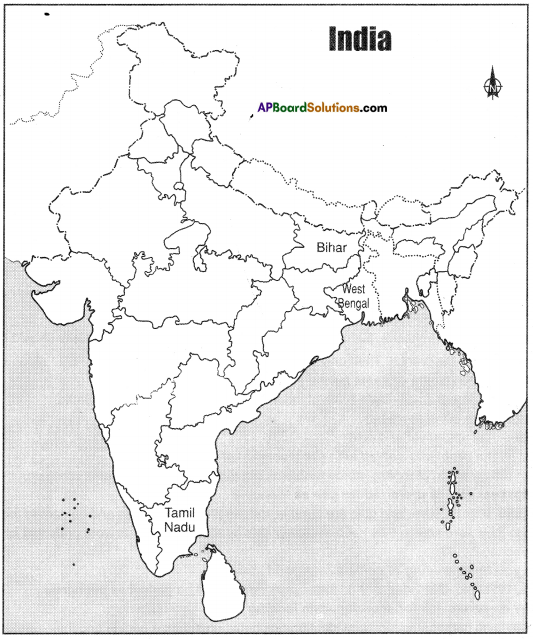

Discussion
Invite the local postmaster/postman to your class and conduct the interaction on different saving schemes.
Answer:
Children: Good morning, Sir.
Postmaster: Good morning, Children.
Children: Sir, we want to know about different saving schemes in the post office.
Postmaster: For especially students some saving schemes are introduced in post offices to habituate the savings by children whenever they get pocket money without wastage, it is useful to them buy books in higher classes.
Children: Please Sir, explain such schemes.
Postmaster: Recurring deposit: This is one of the important saving scheme.
Children: Sir, how should we save money in this scheme?
Postmaster: Children this is monthly scheme. From above Rs.10 to how much we need we should save for a certain period of time.
Children: Sir, is there any other schemes.
Postmaster: Savings account.
Children: Sir, How should we maintain this?
Postmaster: Children, in this scheme we opened an account on our name and whenever we have surplus amount should deposit in our account.
Children: Sir, very interesting, is there any other schemes?
Postmaster: Sukanya scheme, this is for only girls.
Children: Sir, we have interest to know about more schemes.
Postmaster: Children, another scheme is also there, that is fixed deposit.
Children: Please, explain Sir.
Postmaster: In this scheme we will deposit our money for a certain period of time, like 1 year, 2 years, 3 years. But we will get interest on behalf of this deposit.
Children: Thank you Sir, today we know more valuablé information about saving schemes in the post office.

![]()
![]()
![]()
![]()

